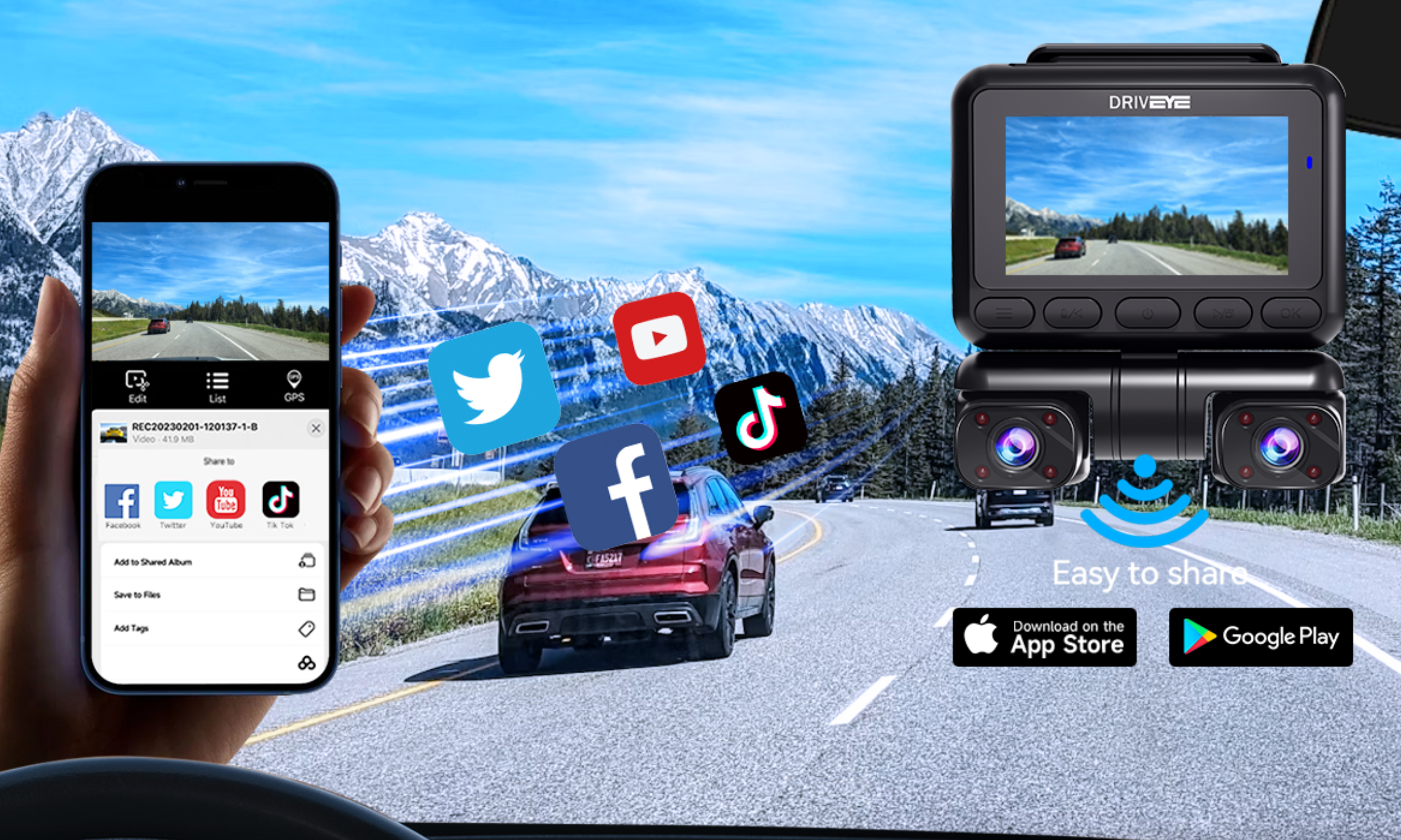Driving at night can be more challenging and risky—reduced visibility, headlight glare, and sudden movements on dark roads make night recording crucial for any dash cam user. Whether you're capturing a night-time accident or protecting your parked car overnight, having good night vision in your dash cam is essential.
In this post, we’ll explain how dash cam night vision works and how you can optimize your recordings in low-light conditions.
What Is Dash Cam Night Vision?
Night vision in dash cams refers to the technology that allows the camera to record clear, detailed footage in low-light or dark environments. This is especially important for:
- Driving at night or in poorly lit areas
- Capturing events while your car is parked overnight
- Recording in tunnels, parking garages, or underpasses
Unlike military-grade infrared night vision, dash cams rely on a combination of hardware and software enhancements to improve image quality in the dark.
Key Technologies That Improve Night Recording
1. Wide Dynamic Range (WDR)
WDR balances bright and dark areas in a single frame. It helps when you’re driving in situations with mixed lighting—like facing oncoming headlights or driving past streetlights.
Benefit: Reduces glare, brightens shadows, and enhances clarity.
2. Large Aperture Lens (f/1.8 or lower)
A larger aperture allows more light into the camera sensor. Dash cams with an aperture of f/1.8 or lower perform better in dark environments.
Benefit: Brighter, sharper images in low light without needing artificial lighting.
3. High-Sensitivity Sensors
Premium dash cams use Sony STARVIS or CMOS sensors that are specially designed to capture more detail in dim lighting.
Benefit: Improved image quality and reduced noise at night.
4. Infrared (IR) LEDs
Some dash cams—especially interior-facing cameras—come with IR lights to illuminate the cabin in total darkness.
Benefit: Crystal-clear cabin footage even when headlights or interior lights are off.
How to Get the Best Night Footage from Your Dash Cam
Even with advanced night vision features, your dash cam needs the right setup and environment to deliver top-quality footage.
Tips to Improve Night Recording:
-
Clean Your Windshield and Lens Regularly
Dirt, smudges, and moisture can blur the image, especially at night. -
Position the Dash Cam Properly
Angle it slightly downward to avoid direct glare from headlights and streetlights. -
Use a High-Endurance, Fast microSD Card
High-resolution night footage requires fast write speeds to avoid frame drops. -
Turn on WDR or HDR Settings in the App
If your dash cam (like the DRIVEYE D9) supports WDR, make sure it’s enabled in the settings. -
Avoid Tinted Windshields or Visor Areas
Dark tints can block out light, reducing video clarity at night.
Does the DRIVEYE D9 Dash Cam Have Night Vision?
Yes! The DRIVEYE D9-5CH Dash Cam is designed with advanced low-light recording features, including:
- GalaxyCore sensors for enhanced night clarity
- Infrared (IR) LED lights for interior and baby car camera views
- WDR technology for balanced nighttime exposure
- 2K/4K high-resolution recording for maximum detail capture
Whether you're capturing license plates on a dark road or monitoring your child in the backseat during night drives, the D9 delivers sharp, reliable video performance.
Pro Tip: Use Parking Mode with Radar or Hardwire Kit
For night-time parking surveillance, consider:
- Radar Mode: Activates recording when motion is detected nearby—ideal for low-traffic nighttime environments.
- Hardwire Kit: Enables 24/7 recording even when the car is off, perfect for capturing scratches or theft attempts.
Both modes ensure you don't miss any incidents—even in pitch black.
Drive worry-free, even in the dark. 🌙
Click on the right to learn about our latest product: DRIVEYE D9 5-Channel Dash Cam - giving you 360° protection without blind spots




Leave a comment
This site is protected by hCaptcha and the hCaptcha Privacy Policy and Terms of Service apply.